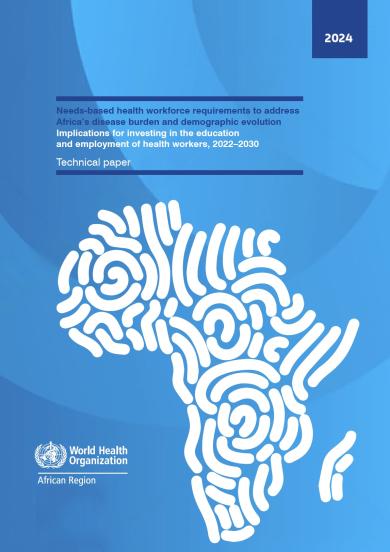
Needs-based health workforce requirements to address Africa’s disease burden and demographic evolution: implications for investing in the education and employment of health workers, 2022–2030
In 2017 the health ministers of the WHO Regional Committee for Africa adopted the African Regional framework for the implementation of the Global strategy on human resources for health: workforce 2030. The framework aims to support Member States to make adequate investments to foster the implementation of policies to ensure the universal availability and accessibility of quality health workers. It emphasizes the importance of aligning health workforce (HWF) investments with population and health system needs, and advocates for health labour market analyses (HLMA) to be conducted by all countries by 2030 and for planning the health workforce based on the population’s health ‘need’ against supply and health system absorption capacity. Recent evidence shows that since its adoption, the African Region has seen a 19% increase in its HWF stock, from 4.3 million in 2018 to 5.1 million in 2022. Factoring in population growth, this represents a 14% increase. Despite the improvement, countries in the WHO African Region continue to have some of the lowest health worker densities and highest disease burdens. Thirty-seven of the 55 countries classified as vulnerable in the WHO health workforce support and safeguards list 2023 were in the African Region.


